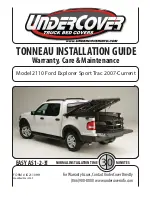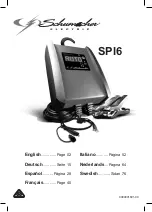
X
Turn the key in the ignition lock to position
0 and remove the key from the ignition
lock.
X
Secure the vehicle.
Notes for 4MATIC vehicles
!
Vehicles with 4MATIC must not be towed
with the front or rear axle raised; otherwise,
the transmission may be damaged.
If the vehicle has transmission damage or
damage to the front or rear axle, have it trans-
ported on a transporter or trailer.
In the event of damage to the electrical
system
If the battery is defective, the automatic
transmission will be locked in position
P. To
shift the automatic transmission to position
N, you must provide power to the vehicle's
electrical system in the same way as when
jump-starting (
Have the vehicle transported on a transporter
or trailer.
Tow-starting (emergency engine
starting)
!
Vehicles with automatic transmission
must not be tow-started. The transmission
may otherwise be damaged.
You can find information on "Jump-starting"
under (
Before tow-starting the following conditions
must be fulfilled:
R
the battery is connected.
R
the engine has cooled down.
R
the exhaust system has cooled down.
When tow-starting, it is important that you
observe the safety notes (
page 396) and the
legal requirements in each respective coun-
try.
X
Switch on the hazard warning lamps
(
X
X
Secure the rigid towing bar or the towing
rope.
X
Depress and hold the brake pedal.
X
Turn the key to position
2 in the ignition
lock.
X
Depress the clutch pedal fully, engage sec-
ond gear and continue to keep the clutch
pedal fully depressed.
X
Release the brake pedal.
X
Tow-start the vehicle.
X
Release the clutch pedal slowly, do not
depress the accelerator pedal while doing
so.
X
When the engine has been started, imme-
diately depress the clutch pedal fully and
shift to neutral.
X
Stop at a suitable place according to the
traffic conditions.
X
Depress the parking brake.
X
Remove the rigid towing bar or towing rope.
X
Remove the towing eye (
X
Switch off the hazard warning lamps.
Electrical fuses
Important safety notes
G
WARNING
If you manipulate, bridge or replace a faulty
fuse with a fuse of a higher amperage, the
electric cables could be overloaded. This may
result in a fire. There is a risk of an accident
and injury.
Always replace faulty fuses with specified new
fuses of the correct amperage.
!
Only use fuses that have been approved
for Mercedes-Benz vehicles and which
have the correct fuse rating for the system
concerned. Otherwise, components or sys-
tems could be damaged.
Electrical fuses
399
Breakdown assistance
Z
Summary of Contents for E 180
Page 1: ...E Class Saloon and Estate Owner s Manual Nur für internen Gebrauch For internal use only ...
Page 4: ......
Page 30: ...28 ...
Page 136: ...134 ...
Page 156: ...154 ...
Page 331: ...Useful information 330 Stowage areas 330 Features 348 329 Stowing and features ...
Page 364: ...362 ...
Page 365: ...Useful information 364 Engine compartment 364 Service 370 Care 371 363 Maintenance and care ...
Page 382: ...380 ...
Page 404: ...402 ...
Page 466: ...464 ...
Page 488: ...486 ...
Page 489: ...487 ...
Page 490: ...488 ...
















































